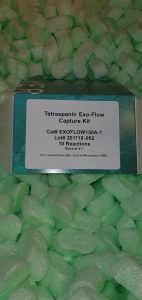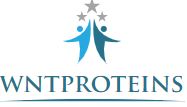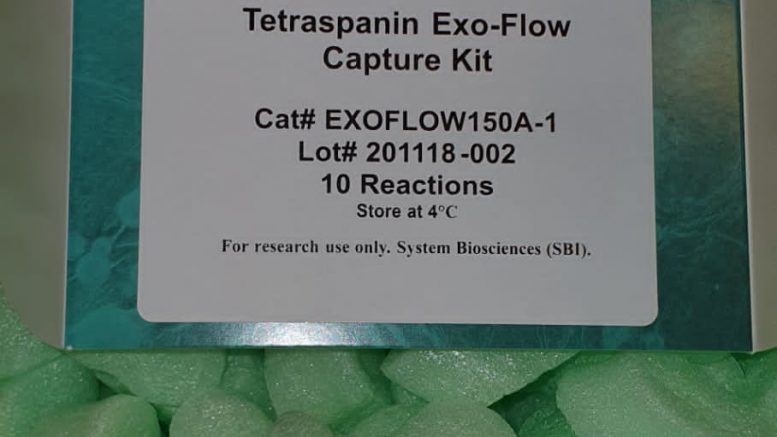Hepatocellular carcinoma (HCC) is a serious reason behind tumor related deaths globally. Annually, the prevalence of HCC is rising and the dearth of early prognostic indicators manifests a dismal prognosis for HCC sufferers. A deep understanding of the molecular occasions that promote HCC development are required for the design of recent diagnostics and therapeutics. Dermatopontin (DPT) is an extracellular matrix protein that regulates the metastatic phenotypes of many cancers.
However, the results of DPT on HCC cell development stay undefined. In this examine, we display that the exogenous expression of DPT inhibits HCC cell development each in vitro and in vivo. Furthermore, we present that DPT regulates CXXC4, which in flip targets c-Myc, EZH2, SOX2 and β-catenin, by its capacity to influence Wnt signaling pathway. These knowledge counsel that DPT regulates CXXC4, c-Myc, EZH2, SOX2 and β-catenin, by Wnt signaling to repress HCC proliferation. This highlights DPT as promising goal for future HCC diagnostics and therapeutic targets.
Inhibition of protein tyrosine phosphatase receptor kind F suppresses Wnt signaling in colorectal most cancers
Wnt signaling dysregulation promotes tumorigenesis in colorectal most cancers (CRC). We investigated the function of PTPRF, a receptor-type tyrosine phosphatase, in regulating Wnt signaling in CRC. Knockdown of PTPRF decreased cell proliferation in patient-derived major colon most cancers cells and established CRC cell traces. In addition, the speed of proliferation in addition to colony formation capacity have been considerably decreased in tumor organoids grown in 3D, whereas the variety of differentiated tumor organoids have been markedly elevated. Consistently, knockdown of PTPRF resulted in a lower in the expression of genes related to most cancers stem cells downstream of Wnt/β-catenin signaling.
Treating PTPRF knockdown cells with GSK3 inhibitor rescued the expression of Wnt goal genes suggesting that PTPRF capabilities upstream of the β-catenin destruction complicated. PTPRF was discovered to work together with LRP6 and silencing PTPRF largely decreased the activation of LRP6. Interestingly, this PTPRF-mediated activation of Wnt signaling was blocked in cells handled with clathrin endocytosis inhibitor. Furthermore, knockdown of PTPRF inhibited xenograft tumor development in vivo and decreased the expression of Wnt goal genes. Taken collectively, our research establish a novel function of PTPRF as an oncogenic protein phosphatase in supporting the activation of Wnt signaling in CRC.
P38 mitogen-activated protein kinase promotes Wnt/β-catenin signaling by impeding Dickkofp-1 expression throughout Haemophilus parasuis an infection
Haemophilus parasuis induces extreme acute systemic an infection in pigs, characterised by fibrinous polyserositis, polyarthritis and meningitis. Our earlier examine demonstrated that H. parasuis induced the activation of p38 mitogen-activated protein kinase (MAPK) pathway, rising the expression of proinflammatory genes and mediating H. parasuis-induced irritation.
Moreover, Wnt/β-catenin signaling activation induced by H. parasuis disrupts the adherens junction between epithelial cells and initiates the epithelial-mesenchymal transition (EMT). In the current examine, p38 MAPK was discovered to be concerned in the buildup of nuclear location of β-catenin throughout H. parasuis an infection in PK-15 and NPTr cells, via modulating the expression of dickkofp-1 (DKK-1), a detrimental regulator of Wnt/β-catenin signaling.
We generated DKK-1 knockout cell traces by CRISPR/Cas9-mediated genome enhancing in PK-15 and NPTr cells, and located that knockout of DKK-1 led to the dysfunction of p38 MAPK in regulating Wnt/β-catenin signaling exercise in H. parasuis-infected cells. Furthermore, p38 MAPK exercise was unbiased of the activation of Wnt/β-catenin signaling throughout H. parasuis an infection. This is the primary examine to discover the crosstalk between p38 MAPK and Wnt/β-catenin signaling throughout H. parasuis an infection. It gives a extra complete view of intracellular signaling pathways throughout pathogenic bacteria-induced acute irritation.

Pancreatic most cancers drug-sensitivity predicted by synergy of p53-Activator Wnt Inhibitor-2 (PAWI-2) and protein biomarker expression
Today, pancreatic most cancers (PC) is a serious well being downside in the United States. It stays a problem to develop efficacious clinically helpful PC therapies. New avenues, primarily based on translational approaches and progressive validated biomarkers may very well be a preclinical choice to guage PC drug candidates or drug combos earlier than scientific trials. Herein, we describe analysis of mixture therapies by incorporating a novel pathway modulator, p53-Activator Wnt Inhibitor-2 (PAWI-2) with different FDA-approved most cancers medicine which have been used in PC scientific trials.
PAWI-2 is a potent inhibitor of drug-resistant PC cells that has been proven to selectively ameliorate human pancreatic most cancers stem cells (i.e., hPCSCs, FGβ3 cells). In the current examine, we confirmed PAWI-2 produced therapeutic synergism with sure kinds of anti-cancer medicine. These medicine themselves oftentimes don’t ameliorate PC cells (particularly PCSCs) as a result of excessive ranges of drug-resistance. PAWI-2 has the flexibility to rescue the efficiency of medication (i.e., erlotinib, trametinib) and inhibit PC cell development. Key molecular regulators of PAWI-2 may very well be used to foretell synergistic/antagonistic results between PAWI-2 and different anti-cancer medicine.
Anti-cancer outcomes confirmed efficiency may very well be fairly precisely correlated to phosphorylation of optineurin (OPTN) in PC cells. Synergism/antagonism was additionally related to inhibition of PCSC marker SOX2 that was noticed in FGβ3 cells. Synergism broadens the potential use of PAWI-2 as an adjunct chemotherapy in sufferers with PC which have developed resistance to first-line focused therapies or chemotherapies.
Phosphatidylinositol 4-phosphate adaptor protein 2 accelerates the proliferation and invasion of hepatocellular carcinoma cells by enhancing Wnt/β-catenin signaling
Phosphatidylinositol 4-phosphate adaptor protein 2 (FAPP2) has been just lately recognized as a tumor-associated regulator that’s intently associated to tumorigenesis. Yet, the exact function of FAPP2 in hepatocellular carcinoma (HCC) remains to be largely unknown. This examine was designed to find out the perform and molecular mechanisms of FAPP2 in HCC.
Elevated expression of FAPP2 generally occurred in the tumor tissue of HCC in contrast with regular controls. High expression of FAPP2 was additionally detected in HCC cell traces and its knockdown markedly decreased the proliferation, colony formation and invasion of HCC cells. Upregulation of FAPP2 by utilizing a FAPP2 expression vector markedly promoted the proliferation, colony formation and invasion of HCC cells. FAPP2 was discovered to advertise the activation of Wnt/β-catenin signaling.
[Linking template=”default” type=”products” search=”Anti- Milk-Specific Proteins Antibody” header=”3″ limit=”166″ start=”4″ showCatalogNumber=”true” showSize=”true” showSupplier=”true” showPrice=”true” showDescription=”true” showAdditionalInformation=”true” showImage=”true” showSchemaMarkup=”true” imageWidth=”” imageHeight=””]
Importantly, inhibition of Wnt/β-catenin signaling abrogated the FAPP2 overexpression-conferred oncogenic impact in HCC cells. In addition, xenograft tumor experiments revealed that knockdown of FAPP2 considerably decreased the tumorigenicity of HCC cells in vivo. Taken collectively, the info of our examine reported a tumor-promotion perform of FAPP2 in HCC and display that knockdown of FAPP2 was able to suppressing HCC cell proliferation and invasion by downregulation of Wnt/β-catenin signaling. This examine indicated that FAPP2 may be a horny candidate anticancer goal for HCC.

